
Nvidia GeForce GTX 660 2GB Review
Manufacturer: NvidiaUK Price (as reviewed): MSRP £180 (inc VAT)
US Price (as reviewed): MSRP $229 (ex TAX)
It feels as if we’ve been waiting an age for Nvidia to release the full-line up of its 6-series GPUs; AMD managed the same feat inside of three months after all, hitting every price point from sub-£100 to the £400 heights of the HD 7970 3GB.
Finally though, today sees Nvidia deliver Kepler cards for the masses, with the launch of both the GTX 660 2GB and the GTX 650. While the high-end cards already on sale offer the most attractive of frame rates, it’s these cards in the sub-£200 price sector which the majority of users buy, and as such the area in which Nvidia needs to be the most competitive.
However, in a somewhat concerning turn of events, Nvidia has stopped its partners from sampling GTX 650s, either in their 1GB or 2GB varieties, before launch. Nvidia has told us this is to ensure the GTX 660 gets its day in the sun, although it’s certainly not the most confidence inspiring decision when it comes to the GTX 650’s performance. While we’ll talk about the GTX 650’s new architecture and specifications then, we won’t be able to bring you a full GTX 650 performance run-down until (hopefully) later this week.
Click to enlarge
GTX 660 2GB – The card you’ve (probably) been waiting for.
While the GTX 660 Ti 2GB offered a fair price/performance reduction from the GTX 670 2GB, it’s fair to say it was met with a luke-warm reception. End-users weren’t clamouring for yet another high-end £200+ part, but instead wanted a sub-£200 entry point into the Kepler family of GeForce GPUs. Well, the GTX 660 2GB is it, with an Nvidia set MSRP of £179.Unlike the rest of the 6-series range so far, which have all used GK104 GPUs running at various clock speeds and with some resources disabled, the GTX 660 2GB uses an all-new GK106 design. The new 28nm GPU has a 2.54 Billion transistor count, 28 per cent less than that of the GK104, allowing for more chips on a wafer and, as such, a lower production cost. Gk106 is still based around the same Kepler core architecture though, with the GPU comprises of graphics processor clusters (GPCs) , subdivided into streaming-multiprocessors (SMs) or ’SMXs’ as Nvidia dubs then (the X makes it sound cool).
Click to enlarge - the new GK106 architecture uses three GPCs and five SMs, but matches the memory controller, ROP count and memory bandwidth of the GTX 660 Ti 2GB
The individual SMs are identical to those found in the GK104 GPU. This means that each individual SM contains 192 stream processors (AKA CUDA Cores) and 16 texture units, alongside Kepler’s improved warp-scheduler and dispatch unit count to cope with the greatly increased core count in comparison to last-generation’s Fermi architecture. Each SMX also still contains Nvidia’s Polymorph engine, allowing each SM to perform tessellation separate from the rest of the GPU.
Click to enlarge
The GK106 GPU of the GTX 660 is built using three GPCs, with two containing a pair of SMs and the third just a single SM in a similar fashion to the 4th GPC of the GTX 670 2GB and GTX 660 Ti 2GB. This means it boasts a trio of raster engines (as these are part of the GPC and not the SM design). In total the new GPU sports 960 stream processors and 80 texture units in total, in comparison to the 1,344 stream processors and 112 texture units of the GTX 660 Ti 2GB.
While it offers a steeply reduced resource count, the GTX 660 2GB is made more competitive thanks to its higher clock speeds. Using the GPU Boost technology shared by the high-end GeForce cards, it’s base clock of 980MHz and guaranteed boost clock of 1,033MHz are 65MHz and 53MHz higher respectively than those of the GTX 670 2GB. As usual, end-users can expect their own cards to boost significantly higher given adequate cooling; we’ve seen our GTX 660 2GB review sample reach 1,071MHz even under extended heavy load.
The GTX 660 2GB compares well to its stable-mates elsewhere too. It shares the triple 64-bit memory controller design of the GTX 660 Ti 2GB, making for a 192-bit memory interface and, thanks to a 1.5GHz (6GHz effective) memory frequency it manages a peak memory bandwidth of 144GB/sec. However, this is still behind the 256-bit memory interface equipped HD 7850 2GB and HD 7870 2GB, between which the GTX 660 2GB looks to sit, at least on pricing.
Three 64-bit memory controllers also means a ROP count of just 24 (the same amount as the GTX 660 Ti 2GB, but 8 fewer than the GTX 670 2GB) and a shared L2 cache of 384KB. Despite its all-new GK106 GPU then, the GTX 660 2GB is, as far as GPU resources go, effectively a GTX 660 Ti 2GB with 2 fewer SMs and running at a higher clock speed. However, it’s in a smaller and even more power efficient package; the GTX 660 2GB’s TDP is just 140W and as such requires a single PCI-E 6-pin power connector.
| Nvidia GeForce GTX 660 2GB | Nvidia GeForce GTX 660 Ti 2GB | Nvidia GeForce GTX 670 2GB | Nvidia GeForce GTX 680 2GB | Nvidia GeForce GTX 690 2GB | |||||
| GPU | |||||||||
| Codename | GK106 | GK104 | GK104 | GK104 | 2 x GK104 | ||||
| Base Clock | 980Mhz | 915MHz | 915MHz | 1,006MHz | 915MHz | ||||
| Boost Clock | 1,033MHz | 980MHz | 980MHz | 1,058MHz | 980MHz | ||||
| Stream Processors | 960 | 1344 | 1344 | 1536 | 1536 | ||||
| Layout | 5 SMs, 3 GPCs | 7 SMs, 4 GPCs | 7 SMs, 4 GPCs | 8 SMs, 4 GPCs | 8 SMs, 2GPCs | ||||
| Rasterisers | 3 | 4 | 4 | 4 | 2 x 4 | ||||
| Tesselation Units | 5 | 7 | 7 | 8 | 2 x 8 | ||||
| Texture Units | 80 | 112 | 112 | 128 | 2 x 128 | ||||
| ROPs | 24 | 24 | 32 | 32 | 2 x 32 | ||||
| Transistors | 2.54 Billion | 3.54 Billion | 3.54 Billion | 3.54 Billion | 2 x 3.54 Billion | ||||
| Die Size | TBC | 294mm² | 294mm² | 294mm² | 2 x 294mm² | ||||
| Process | 28nm | 28nm | 28nm | 28nm | 28nm | ||||
| Memory | |||||||||
| Amount | 2GB GDDR5 | 2GB GDDR5 | 2GB GDDR5 | 2GB GDDR5 | 2 x 2GB GDDR5 | ||||
| Frequency | 1.5GHz (6GHz effective) | 1.5GHz (6GHz effective) | 1.5GHz (6GHz effective) | 1.5GHz (6GHz effective) | 1.5GHz (6GHz effective) | ||||
| Interface | 192-bit | 192-bit | 256-bit | 256-bit | 2 x 256 bit | ||||
| Bandwidth | 144/GB/sec | 144 GB/sec | 192 GB/sec | 192 GB/sec | 2 x 192 GB/sec | ||||
| Card Specifications | |||||||||
| Power Connectors | 1 x 6-pin PCI-E | 2 x 6-pin PCI-E | 2 x 6-pin PCI-E | 2 x 6-pin PCI-E | 2 x 8-pin PCI-E | ||||
| Stock Card Length | 240mm | 240mm | 240mm | 257mm | 279mm | ||||
| TDP | 140W | 150W | 170W | 195W | 300W | ||||
| Typical Street Price | £180 | £250 | £300 | £400 | £840 | ||||

MSI MPG Velox 100R Chassis Review
October 14 2021 | 15:04

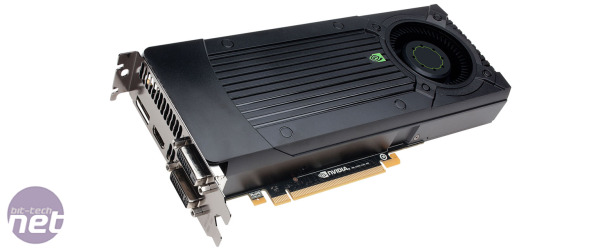
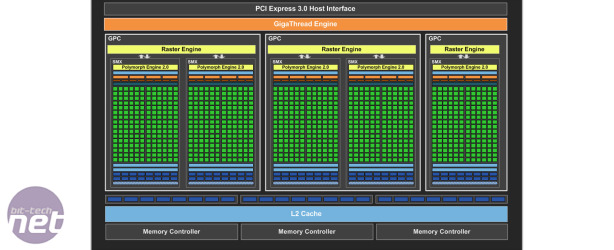
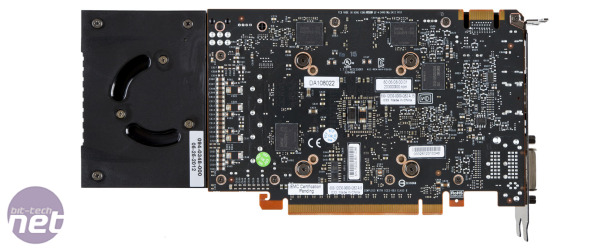
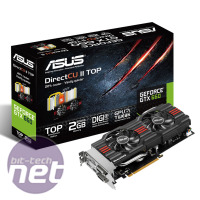
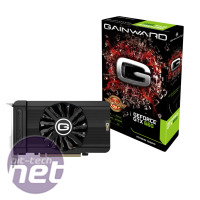
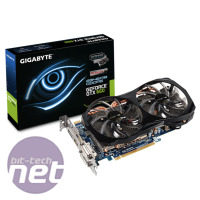







Want to comment? Please log in.